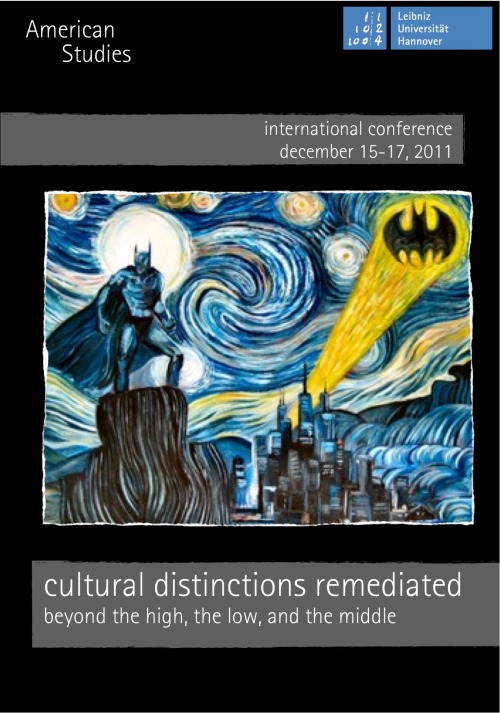
Abstract for Bettina Soller’s talk at “Cultural Distinctions Remediated: Beyond the High, the Low, and the Middle” (Leibniz University of Hannover, 15-17 December 2011):
Authorship as a Category of Cultural Distinction: Collaborative Writing and the Solitary Genius
Bettina Soller (American Studies, Göttingen)
When literary critics turned to questions of authorship and hypertext, they rapidly created a canon of texts worthy of discussion. The predominant concept of the singular author as the sole originator of ideas and the authority over text has strongly been shaped by literary studies and has also been applied to new media. Popular forms of collaborative writing that exemplify the more radical changes in questions of authorship in digital projects like Wikipedia or fan fiction writing are still marginalized in literary theory. It seems that, like in print media, the higher the values that are associated with a text or product, the less collaborative authorship is seen as a legitimate category. Especially advocates of a strong canon have used different forms of authorship as categories for cultural distinction. While the ‘solitary genius’ has been hailed as the producer of ‘high’ art or academic achievements, collaborative authorship has been devalued, not only by academia, but also by the public imagination. Therefore, traces of collaboration have been erased or veiled from literary texts as well as other media texts such as films or TV series that are produced through collaborations of a team of writers and producers, or with the help of spouses, friends, and editors. The performance of authorship by the producers of texts as well as the construction of authorship by texts’ recipients generally conforms to the idea of a singular author, while many actual practices include collaborations. Especially the forms of digital writing that make public the processes of collaboration that are involved in other media as well, illustrate how the development of non-evaluative concepts of collaborative authorship will enrich theoretical discourse.









